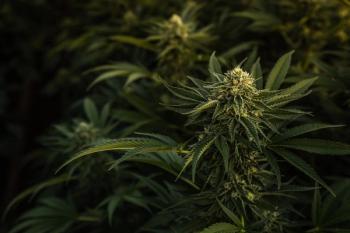
New Study Provides In-Depth Look at Effects of Ayahuasca Compound on the Human Brain
A recent study of a psychedelic compound found in ayahuasca produced new brain scans showing its impacts on the brain.
In a study from Imperial College London, 20 volunteers – who had been given a health screening prior to the study to ensure they were physically and mentally suitable – received a 20mg injection of dimethyltryptamine (DMT) (1). The researchers used electroencephalography (EEG) and functional magnetic resonance imaging (fMRI) to recorded brain activity before, during and after the drug took hold, and the volunteers provided real-time updates on their experience (1).
The results were published in an article titled, “Human brain effects of DMT assessed via EEG-fMRI,”in the journal Proceedings of the National Academy of Sciences (2). “Psychedelics are particularly useful research tools for studying the neurobiology of consciousness,” the Discussion section read in part. “Their ability to shift its quality in a fundamental and often enduringly transformative way, while preserving wakefulness, is arguably unparalleled in pharmacology. We believe the present results, and particularly those pertaining to whole-brain organization, such as global FC, pairwise FC, and the principal FC gradient, now point toward a signature global brain action of psychedelics that is robust, reliable, unique, and revealing, not just of ‘psychedelic consciousness’ but of conscious experience more broadly.”
“What we have seen is that DMT breaks down the basic networks of the brain, causing them to become less distinct from each other,” said Robin Carhart-Harris, a professor of neurology and psychiatry at the University of California, San Francisco (1). “We also see the major rhythms of the brain – that serve a largely inhibitory, constraining function – break down, and in concert, brain activity becomes more entropic or information-rich.”
“DMT is short-acting, so it’s a very flexible tool compared with psilocybin and LSD which can last for six to 10 hours,” said Chris Timmermann, head of the DMT research group at Imperial College London (1).
“We suspect that while the newer, more evolved aspects of the brain dysregulate under DMT, older systems in the brain may be disinhibited,” Timmerman added (1). “A similar kind of thing happens in dreaming. This is just the beginning in cracking the question of how DMT works to alter consciousness so dramatically.”
References
https://www.theguardian.com/science/2023/mar/20/psychedelic-brew-ayahuasca-profound-impact-brain-scans-dmt - Timmermann, C., Roseman, L., Haridas, S., Rosas, F. E., Luan, L., Kettner, H., Martell, J., Erritzoe, D., Tagliazucchi, E., Pallavicini, C., Girn, M., Alamia, A., Leech, R., Nutt, D. J., & Carhart-Harris, R. L. (2023). Human brain effects of DMT assessed via EEG-fMRI. Proceedings of the National Academy of Sciences, 120(13).
https://doi.org/10.1073/pnas.2218949120
Newsletter
Unlock the latest breakthroughs in cannabis science—subscribe now to get expert insights, research, and industry updates delivered to your inbox.





